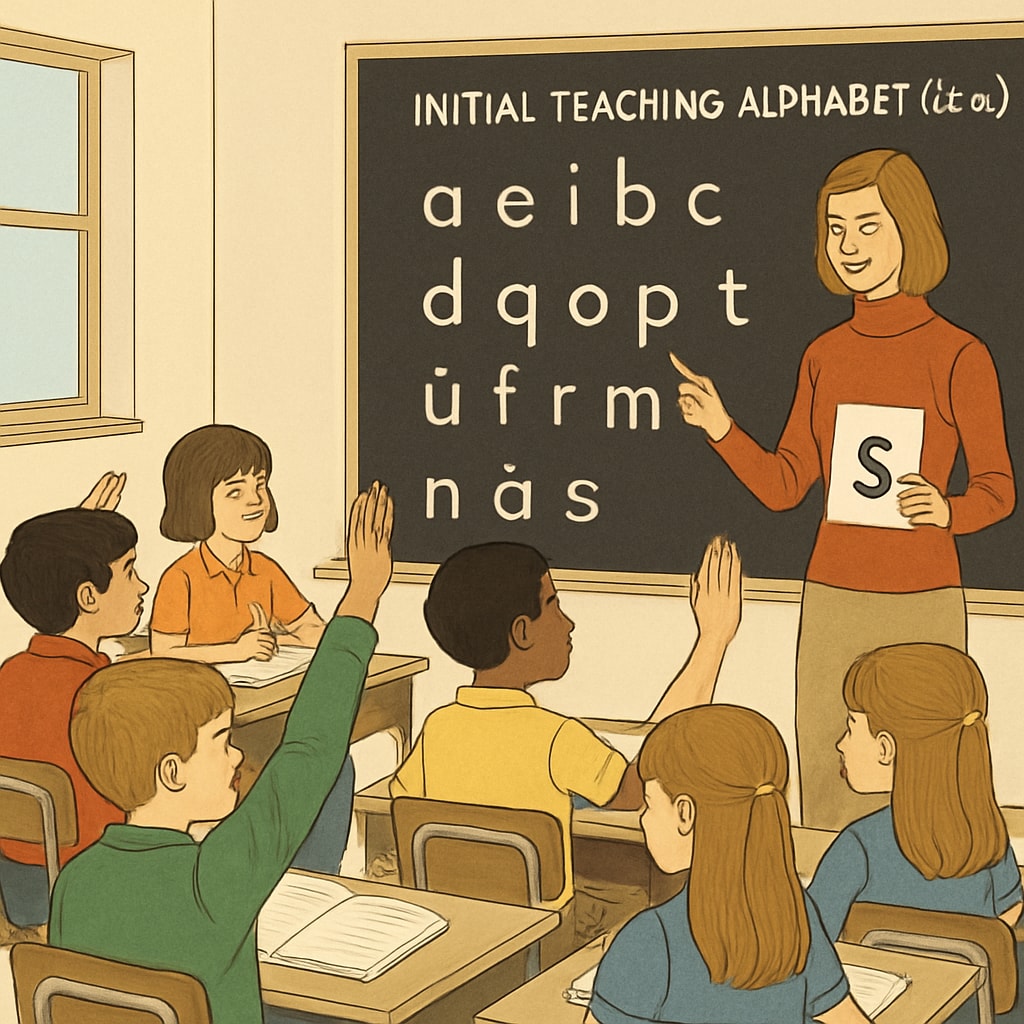The Initial Teaching Alphabet (ITA), a phonetic writing system introduced in the 1970s, was designed to simplify the process of learning to read. By representing sounds more consistently than standard English, ITA aimed to make reading accessible to young learners. However, this educational experiment inadvertently created lasting spelling difficulties for many students. In this article, we explore the origins of ITA, the challenges it presented, and its long-term impact on spelling, as well as insights for modern teaching practices.
The Initial Teaching Alphabet: Origins and Goals
Developed by Sir James Pitman in the 1960s and widely adopted in the 1970s, the Initial Teaching Alphabet was a simplified phonetic alphabet designed to help children learn to read. The system consisted of 44 symbols, representing the sounds of spoken English more directly than conventional orthography. The goal was to bridge the gap between spoken and written language, reducing the complexity that often hinders early reading development.
ITA was introduced in schools with great optimism. Educators believed that by focusing on phonetics and removing the irregularities of English spelling, children could master reading more quickly. However, the transition from ITA to standard English orthography posed unforeseen challenges.

How ITA Led to Long-term Spelling Difficulties
While ITA was effective in teaching reading in the short term, it created significant problems when students transitioned to standard English spelling. Here are the key reasons why ITA caused lasting spelling issues:
- Over-reliance on Phonetics: ITA’s strict phonetic approach encouraged students to spell words as they sounded, ignoring the complex rules and exceptions of standard English.
- Confusion During Transition: Switching from ITA to traditional spelling created cognitive dissonance, as students had to unlearn one system and adapt to another.
- Reinforced Errors: Prolonged exposure to ITA often ingrained incorrect spelling patterns, making it difficult for learners to adjust later in life.
For example, a child taught through ITA might spell “phone” as “foen” or “enough” as “enuf,” reflecting ITA’s phonetic principles. These habits, once established, were challenging to break, leading to persistent spelling errors into adulthood.
Lessons from ITA for Modern Language Education
Although the Initial Teaching Alphabet was phased out by the late 1970s, its legacy offers important lessons for educators today:
- The Importance of Continuity: Teaching systems should prioritize seamless transitions between learning stages, ensuring that foundational skills support rather than hinder future progress.
- Balancing Simplicity and Realism: While simplifying complex concepts can aid initial learning, it is essential to introduce real-world complexities gradually to avoid cognitive conflict.
- Holistic Approaches: Modern methods, such as phonics-based instruction, combine phonetic awareness with exposure to standard spelling, offering a more balanced approach than ITA.
For educators, ITA serves as a reminder that innovation in teaching methods must consider both short-term benefits and long-term consequences. A well-intentioned approach can have unintended side effects if not carefully evaluated.

Conclusion: Moving Beyond the ITA Experiment
The Initial Teaching Alphabet, though innovative for its time, ultimately highlighted the complexities of teaching language. Its short-term effectiveness in simplifying reading came at the cost of long-term spelling proficiency. By studying the outcomes of ITA, educators can develop more balanced and sustainable approaches to teaching.
Today, advances in linguistics and educational technology offer new opportunities to refine language learning methods. By integrating lessons from past experiments like ITA, we can create systems that build foundational skills without compromising future development. As a result, students can achieve both literacy and mastery of language in a way that is both efficient and enduring.
Readability guidance: This article uses concise paragraphs, clear transitions, and structured subheadings to improve readability. Lists summarize key points, and overuse of passive voice is avoided. Images are included to enhance engagement.


